Last update: 09/04/2020
Once upon a time, this article was written to make it easier for users of fabrics and jammers to determine which equipment is more suitable to use.
This article has the most important information about the three types of anti-theft systems, but by the beginning of 2020, one of the three types, or rather EM, has already dropped out of the list since the production of these systems by all manufacturers has been stopped for several years for many reasons:
1. very high power consumption (not economical)
2. low percentage of trigger on tags
3. very difficult selection of the correct label for the EM gate of a particular manufacturer, so that the label is detected perfectly. When you look at the photo you will see that the tags of this system differ in length, width and configurations.
4. The decline in the production of EM tags by Chinese manufacturers due to negative feedback from suppliers.
As a result, this technology has been dying for several years and it is quite difficult to meet it in reality. Based on this, we did not consider the EM system in the filming of this video, BUT:
- thanks to our knowledge collected over all years, we created this unique video in which all the nuances of AM and RF anti-theft systems, their vulnerabilities and all the tools for using these vulnerabilities are examined.
And now this video is the best addition to this article or vice versa, you decide.
If you do not have knowledge of the English language, do not worry, we filled the video with the highest quality subtitles in English.
This means that you can enable the automatic translation of subtitles and they will be translated very high quality into any language of the world.
Happy viewing:
P.S.: we apologize for the camera's autofocus failure and not the perfect mood.. comprehensive preparation for video shooting has spent a lot of energy, I hope for your understanding.
timecode:
02:35 - 1. Theoretical minimum.
10:00 - 2. Labels. The biggest difference.
15:52 - 3. Plastic (Hard) tags:
15:52 - AM tags.
22:22 - RF tags.
28:19 - universal AM+RF tags.
35:42 - 4. EAS systems (gates).
44:30 - 5. identified EAS vulnerabilities.
55:20 - 6. high-tech exploitation of EAS vulnerabilities.
1:00:05 - 7. lifehacks and fun.
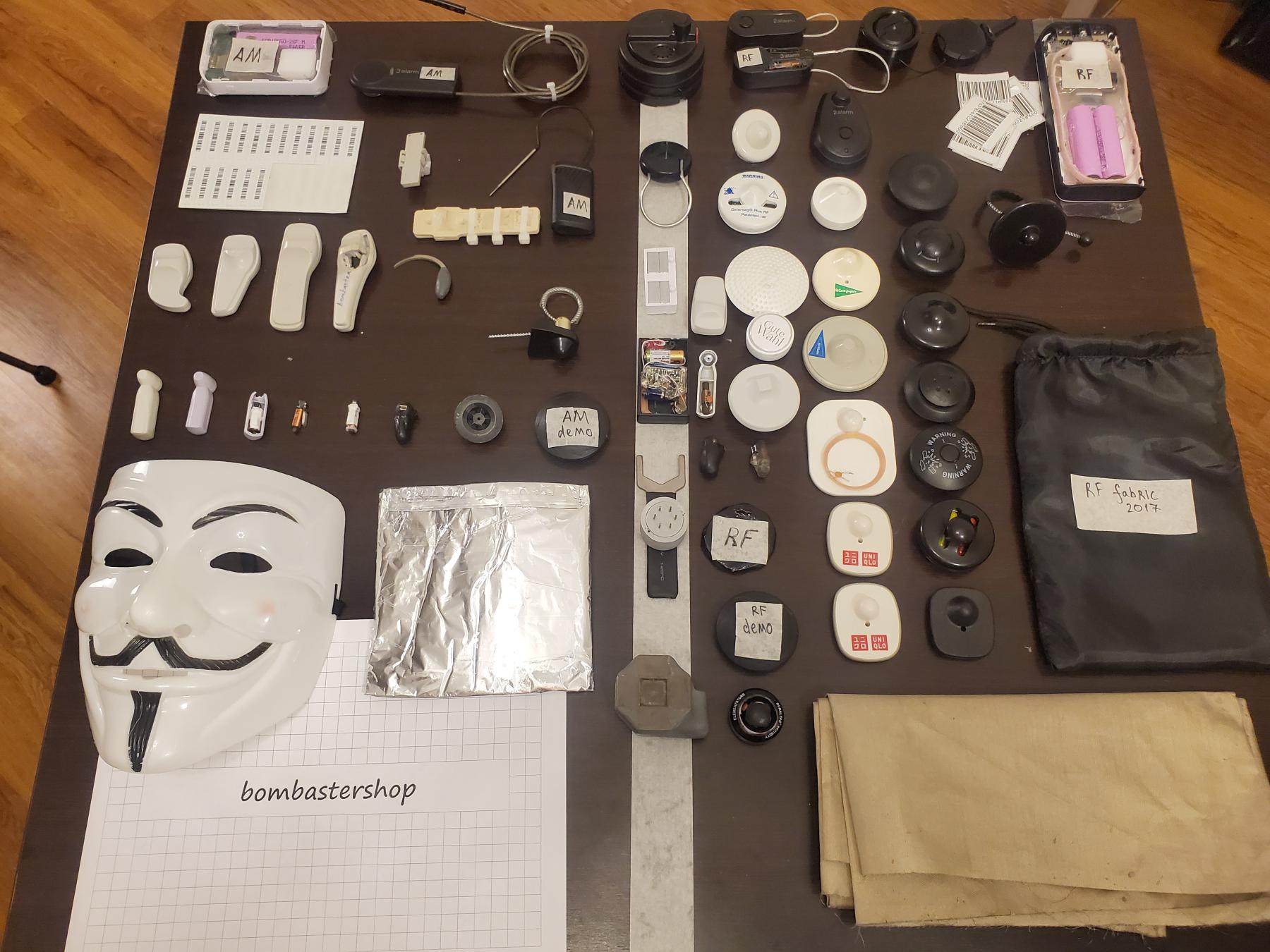
Please do not put this intelligence about the endless expanse of the Internet, as these are my individual hours of work and this post is based on my personal knowledge. It was partly realized because of your financial support of my projects, as without it I could not bring myself to find time for these posts.. I hope this creation will be important and will be continued on other issues that are interesting to you. Please do not upbraid me for the design and sizes of the images, as in this case it’s much more important to convey the information and not to show off any unnecessary garbage..
Chapter 1. Theoretical minimum.
1. There are three common widespread antitheft systems:
Acousto-magnetic -> AM
Radiofrequency -> RF
Electromagnetic -> EM
(Subsequently we’ll use the abbreviations)
2. The most important fact, that you have to realize is that all these systems use three completely different principles of detecting EAS TAGS (hereinafter – the “tag”).
AM works on the principle of resonant response of the tag, when the gates firstly create the generation in it, and then listen to the definite frequency response from the generated tags. In this moment of «hearing» the gates themselves are «silent». professionals use for this system method “jamming” with the help of special jammer:
http://shoplifting.tech/shop/smart-AM-jammer
http://shoplifting.tech/shop/jammeramrf
RF works on the principle of self-field analysis in order to identify the “sinks of the field (tag)». That’s why the RF system must always be set on the basis of 2 columns, as it’s impossible to make the steady electromagnetic field, using only one gate. This system is easily overcome with the help of shielding fabric or RF jammer:
http://shoplifting.tech/shop/fabric2017
http://shoplifting.tech/shop/rf-jammer
http://shoplifting.tech/shop/jammeramrf
EM runs on the principle of magnetostriction, when there is an impact on two metal strips of different shape and length. If the label falls into that field, the oscillations of two strips create their own frequency response, which is picked up by the receiver in the EM gate.
Due to it, it should be understood that the correct methods of dealing with these systems can’t be the same.
Chapter 2. Labels (soft-tags). The biggest difference.
As all the systems operate on different principles, then soft-tags cannot be the same.
All three systems use the label-stickers (soft-tags). At first glance it’s just a sticker, but it’s also the easiest way to determine what system is used in the required store.
AM labels:
1. Can be only plastic!!!.
2. Size: 4 cm – length, 1 cm – breadth, 1-2 mm – height! – There are no other that exist for this system.
3. Convex = volumetric.
4. The most often used style – white with a false barcode, but black and other colored can also be found.
5. Inside the tags there are two parallel solid metal strips of the same size which are and very vulnerable to bending and jam.


RF soft-tags:
1. Can be made only from paper or foil-based!
2. Most square, rarely round.
3. Size: square – 4×4 cm; round – 4 in deameter. Both very thin.
4. White with a false barcode, monochrome, rarely hidden under the soft-tags from the factory.
5. The internal soft-tags is a coil and plane capacitor on the corner, made of foil. Vulnerable to tears and cuts.
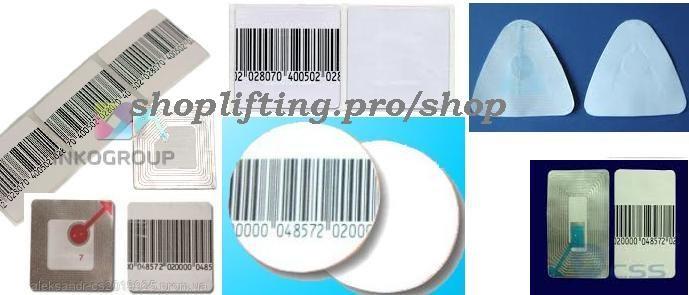
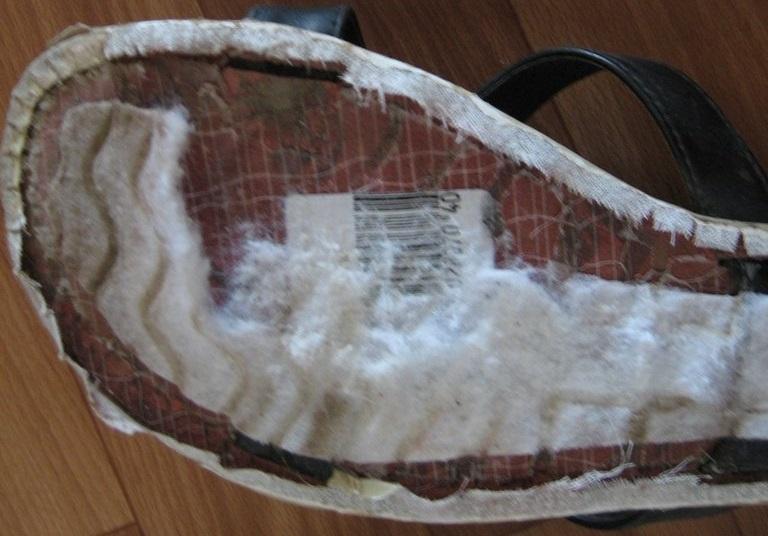
Features of EM labels stickers:
1. On a paper basis! Sometimes, instead of paper, plastic film is used and the strip looks like a thin metal thread.
2. ALWAYS !!! elongated (length / width ratio)
3. The inside of the soft tag is two of the thinnest metal strips. The first is like a thread, the second is the rectangles attached to this thread. vulnerable only to bending in half in length.
Do not be afraid of the existence of these tags, if you did not see them, then by the shape of the gate (discussed below in the text) you can recognize that this is an EM system and you need to be more careful.
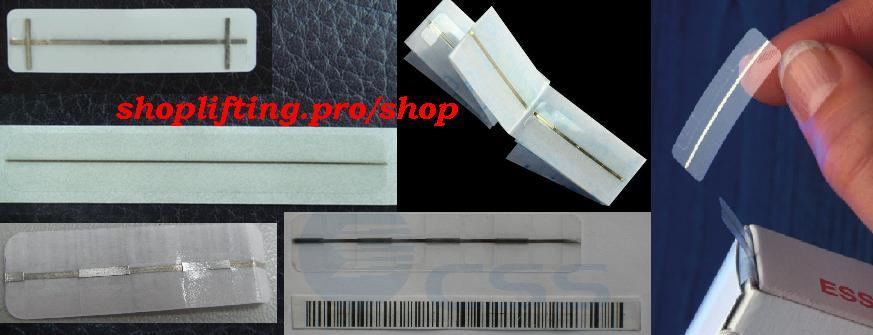

Result:
If there are labels in the store, it can be easy to identify the anti-theft system of gates.
Chapter 3. Plastic (Hard) TAG
AM (hard inactivated tags):
Only 2 types of constituents can be put inside the AM hard tags:
– Ferrite core with the condenser at its ends, very tightly coiled by the thin wire in a large number of turns:

– Two strips made of a special alloy, which are responsive to the electromagnetic system of the gates:
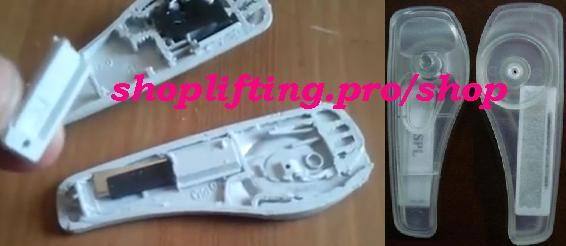
1. Super-Tag
– All tags that can be opened by the special hook.
– Have a hole for the hook from the end
– It goes without saying that it’s practically impossible to find RF Super-Tag. Even if you do, it’s always much more shorter than the AM one because it’s usually done in China.
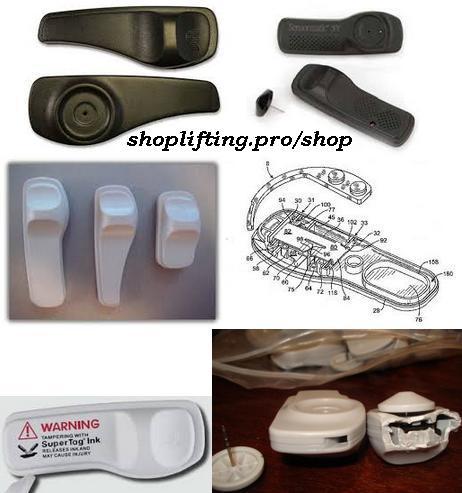
2. Pencil Tag, Ultra Tag – Are used very often, but there are RF tags which look quite the same and couldn’t be distinguished if you don’t know how the Sensormatic Pencil Tag looks like.
There are some minor visual differences: if you find the logo Sensormatic – 100% that it’s the AM version of the tag.

3. GOLF-TAG
– Very rare.
– Practically inpossible to distinguish from the RF tags (only be the offset the sensor from the axis when it’s attached to the detacher, as inside there is a AM coil on a ferrite rod that strongly anchores to the detacher.)
Also can be determined by the sound and feelings during the shaking of the tag.

4. Bottle tags have a small projection near the lock where the AM coil (on a ferrite core) can be disposed.

5. Ultra Gator Tags
– Used in the AM or EM systems (very rarely, because unbreakable EM label is presented as overlapped two stripes).
– Opening method is truly simple: sensor locates inside a metal plate with a cut that clamps the needle. After extension the needle finally releases.

RF (hard tags):
1. Round and square standard plane tags.
– Can be used only in RF systems.
– There can be found very similar tags for EM system, but they are very rare (describes below)

2. Golf-Tag, Shells, turtles and other different epithets for the round tags with a big, broad head of needle.
– As it’s said, can be found in Am systems, but rarely.

3. CONE… – In those tags can be put only lock and strongly twisted RF-tag spiral.
All (without any exception) are made for RF systems.

4. Bottle tags
– Have a squared or round increase near the lock mechanism. That means that there is surely spiral of wire inside.
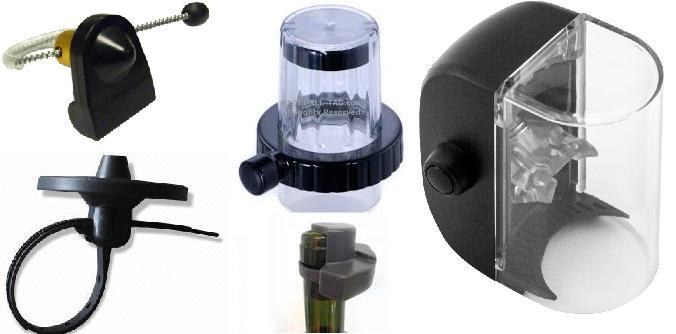
5. inside these tags can be found just a spiral of wire with a capacitor or a coil, which is wound on a ferrite core in a single layer with a small number of turns:
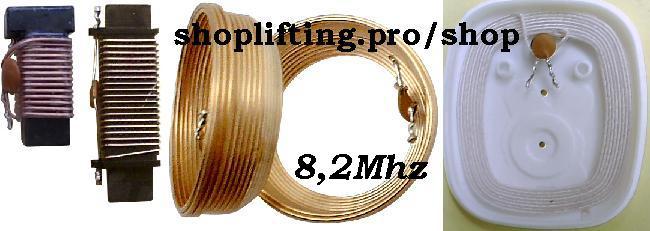
EM (hard tags):
1. Frankly speaking, I’ve seen only those, which you can see on the photo. These tags I ordered directly from the producer, because there is no supplier in Russia that has such tags in existence. Even in European and Western countries they are extremely rare.
2. It runs as follows that EM hard tags are the extreme exception. From PF tags they can be distinguished just by putting these tags on the light (inside them there are 2 metal strips, arranged perpendicular to each other)
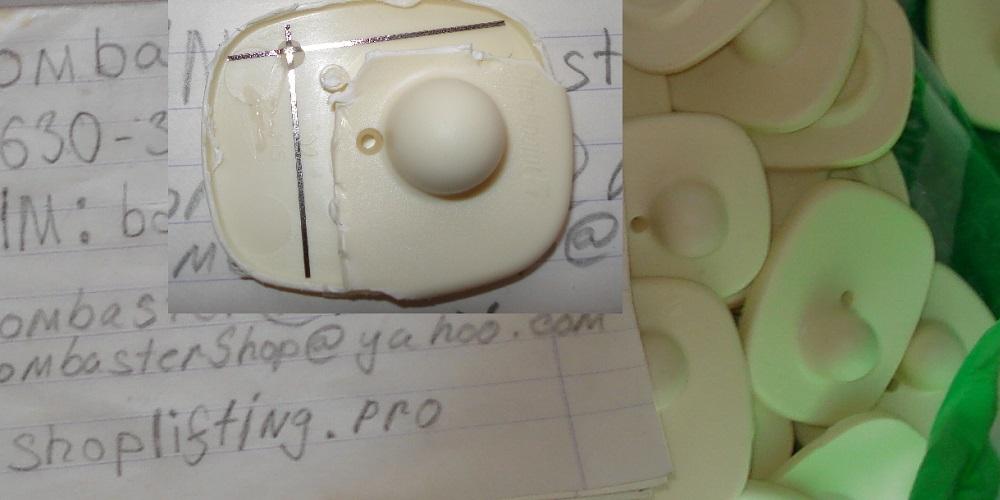
UNIVERSAL-TAGS:
1. There are specialized tags S3 Hard Tags with 3 Alarm Technology or 2 Alarm Technology.
These tags can use any of the listed technologies AT CHOICE... So the manufacturer claims, but I very much doubt the use of EM tags in their technology.
Large Alpha spiders have both AM and RF tags inside. Small Alpha spiders have only one of two types of tags inside, as there is not enough space inside.
Read more about them from the original source:
http://www.alphaworld.com/index.asp
and look at the sites of sellers of anti-theft equipment if you need such information.
2. Systems with activation in the space between the gates, at a certain frequency, can only be AM or only RF. I characterize them like this:
Responsive sound from the built-in speaker to the gate frequency.
Checkpoint Alpha Systems has a line of spider or cable tags:
|
1alarm = 1. the presence of an anti-theft tag. 2. there is no protection against cable cutting, wires only for the physical fastening of the tag to the product. (this is actually a normal tag with a cable only)
2alarm = 1. the presence of an anti-theft mark. 2. Electronic protection from cutting the cable, when cutting the cable, the sensor will respond with an audible alarm. (this anti-theft sensor can be carried out in the fabric if the RF gate or under the muffler if the gate is AM or RF)
3alarm = 1. the presence of an anti-theft mark. 2. protection from cutting the cable. 3. The ability of the tag to respond to the radiation of the gate, the sensor will respond to the gate of its own built-in sensor sound signaling as well as when cutting the cable. (this does not protect either the jammers or the fabric, the sensor will respond with an acoustic alarm, since the analysis system is set to receive the signal exactly from the gate, and no matter how we like, the gate is always more powerful and jamming and the properties of the fabric, which does not violate the sensor response, but the possibility of obtaining a signal without interference). solution: - It is necessary to deactivate the sensor in a regular way, take a special detacher and open the spider. in the inactive form, the system of protection against penetration through the anti-theft gate, does not work. |
3. Like Alpha products, standard Spider WRAP tags have 2 types of tags inside, as there is a lot of space inside the WRAP for this.
EM labels are not built in (I have never seen it) since the spider manufacturer cannot know exactly what type of EM tags need to be added inside.

Result:
by the appearance of the tags, you can determine the system in the store without even going into it.
when I see a SuperTag on products, I immediately know that they use AM.. when I see something round then it is most likely an RF .. if I see a square flat hard tag, then I'm 99.99% sure that it is RF.
With total knowledge, I can only doubt if I do not see the soft tags and find dubious sensors (golf tag) and gates that are not known to me or that are completely closed by advertising.
What will I do? I’ll try again to find the sticker tags, I’ll carefully examine the gate, I’ll study the cash register equipment which is different for some systems, as well as the cash zone.
If all this has not given new information, I use more advanced identification methods that are described in the sections with instructions for jammers.
Chapter 4. Gates.
I suppose that first I have to answer the question "what if the gates are in advertising, in cardboard?"
1. cardboard does not always close the gate from above (you can look from above or take a photo as if you were photographing a store).
2. Often there are holes in the cardboard for LED signaling by which you can determine the model of the gate.
3. start to study gate models, since even one base bolt sticking out from under the cardboard can give you an answer about the model and manufacturer of the gate.
1. AM (Acousto-Magnetic systems):
There are AM gates from Gateway, CrossPoint, WorldGlobal (WG), Amersec, Catalyst, MTC and several manufacturers from China without a name.
Without a doubt, the Sensormatic brand from Tyco Systems is the original creator of AM technology and you are most likely to see these AM systems:

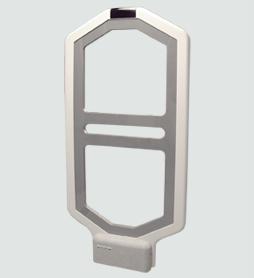 |
 |
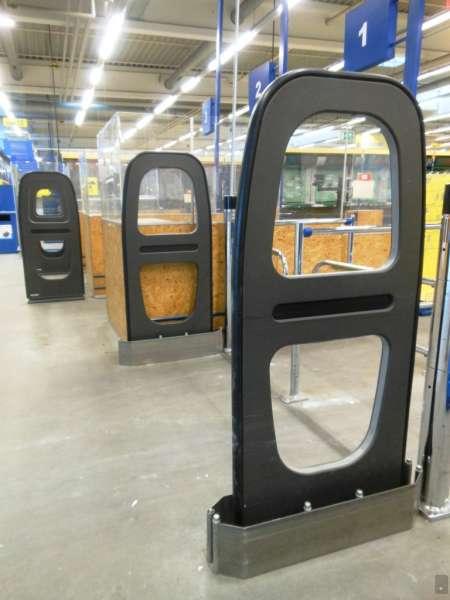 |
Gateway (This manufacturer produces both AM and RF systems. Be more attentive to the configuration):
 |
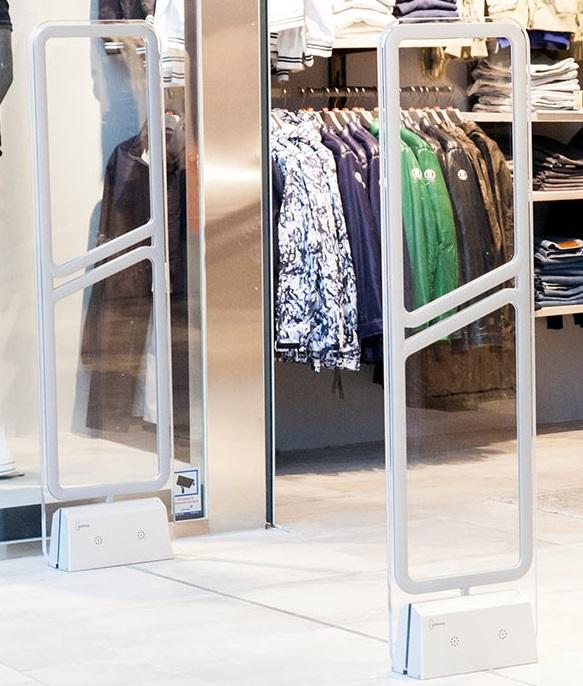 |
 |
 |
 |
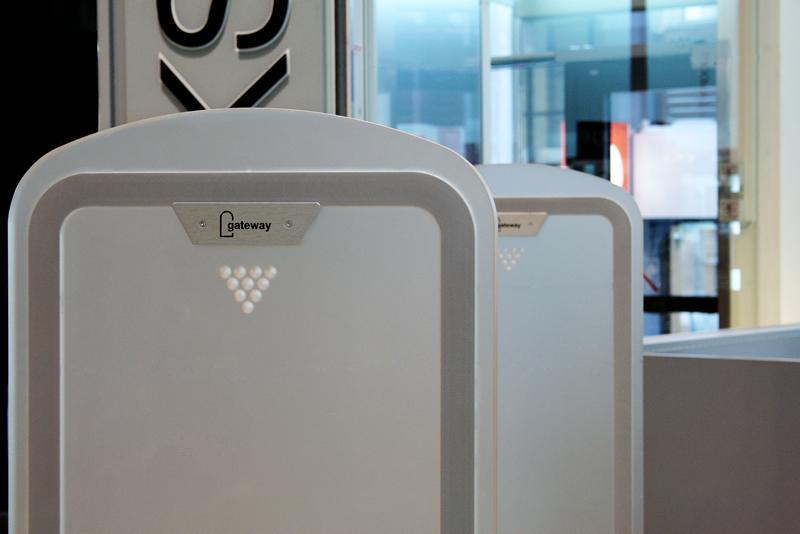 |
CrossPoint (This manufacturer produces both AM and RF systems. Be more attentive to the configuration):
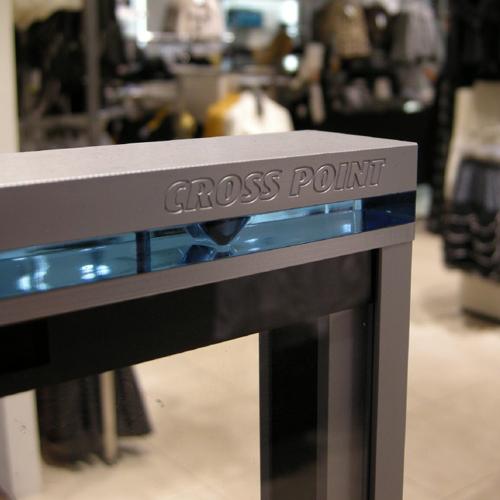 |
 |
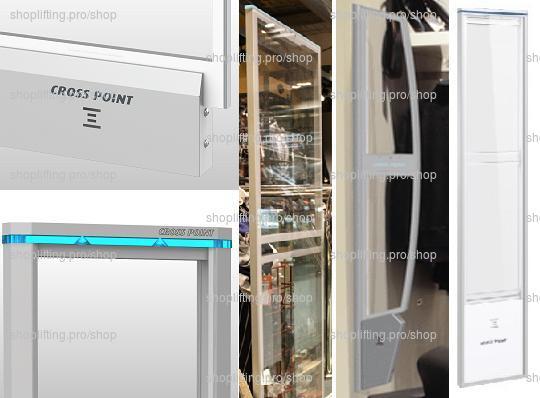 |
AMERSEC (This manufacturer produces both AM and RF systems. Be more attentive to the configuration):
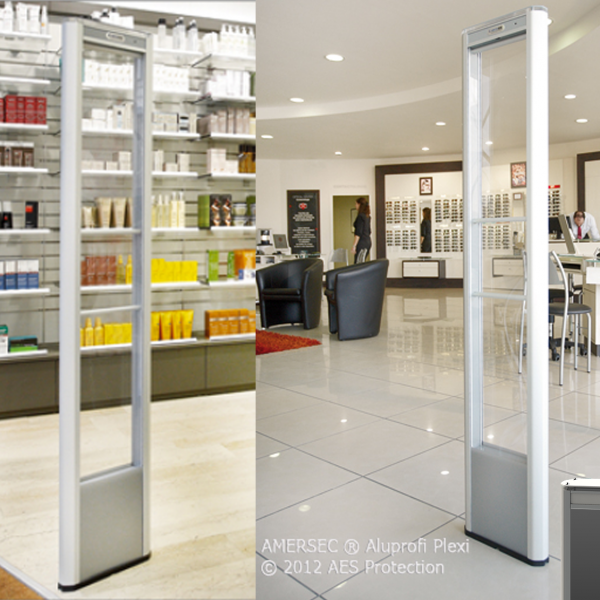 |
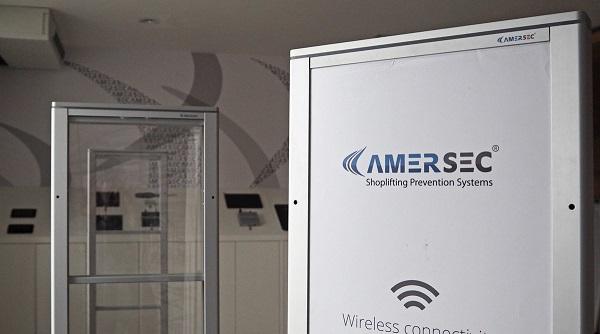 |
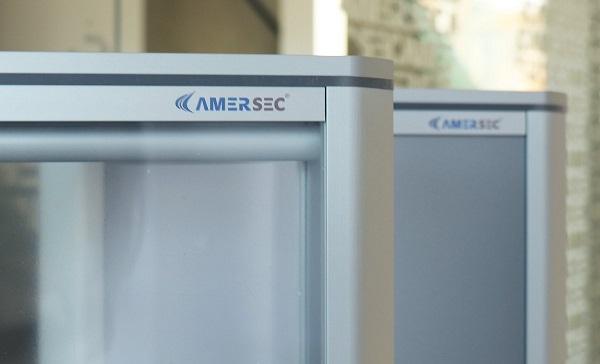 |
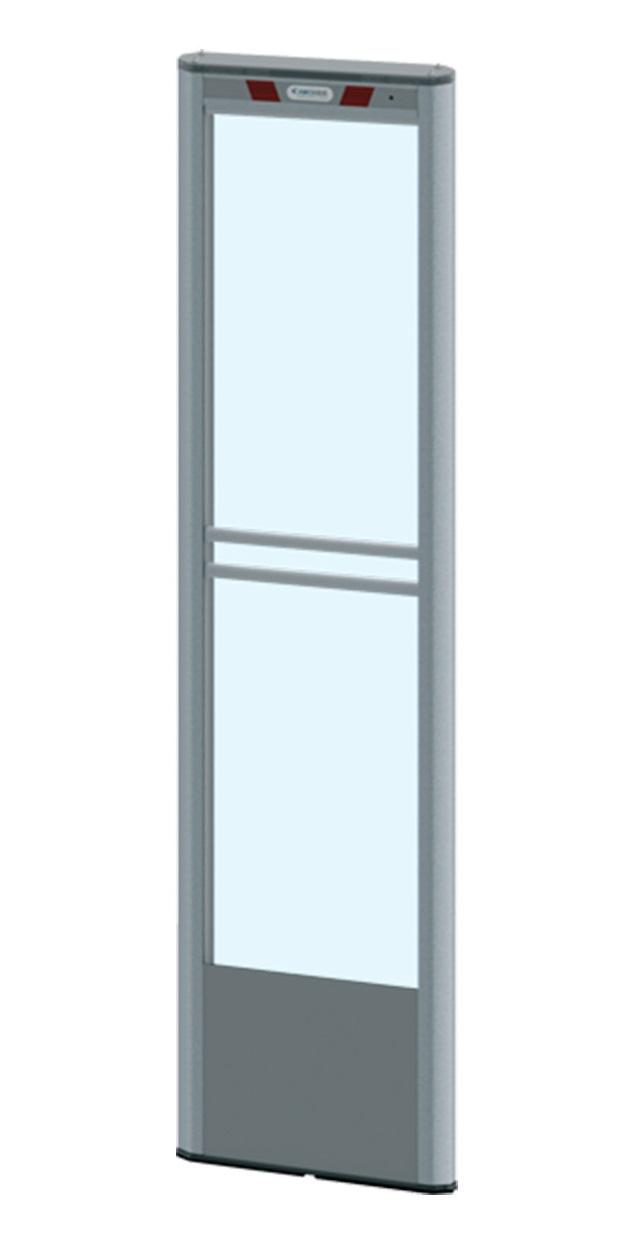 |
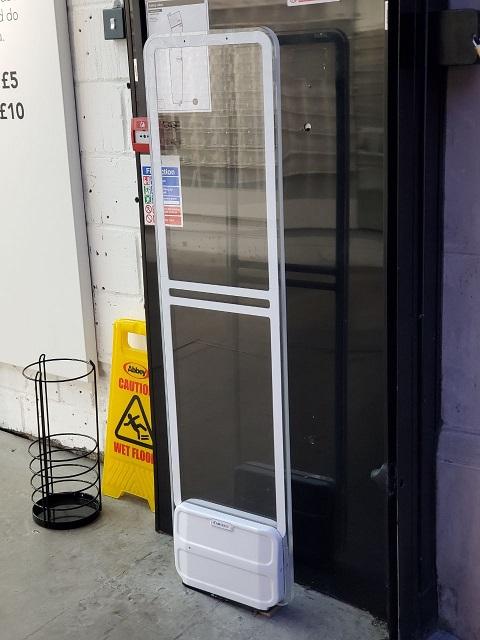 |
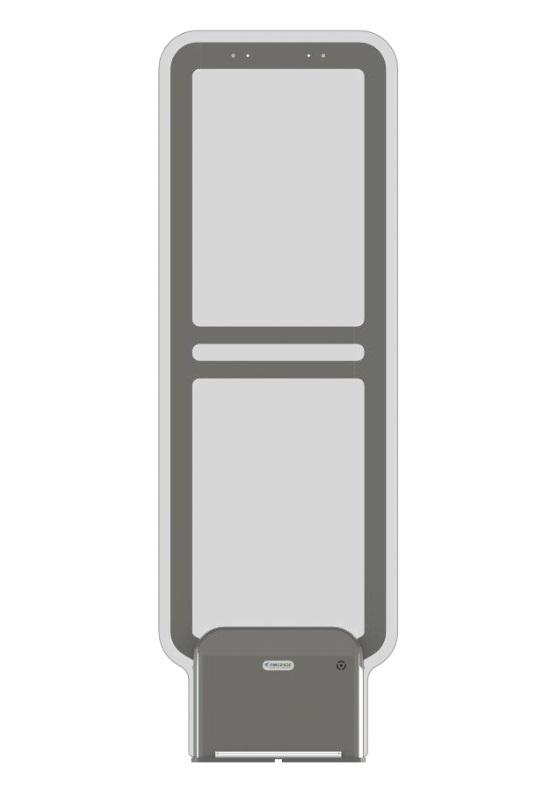 |
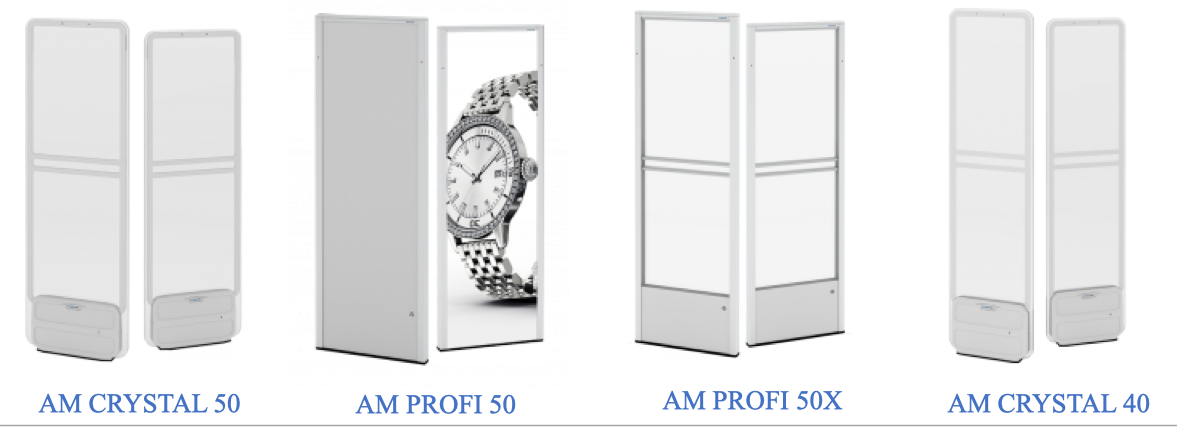
WorldGlobal(WG):
 |
Catalyst (This manufacturer produces both AM and RF systems. Be more attentive to the configuration):
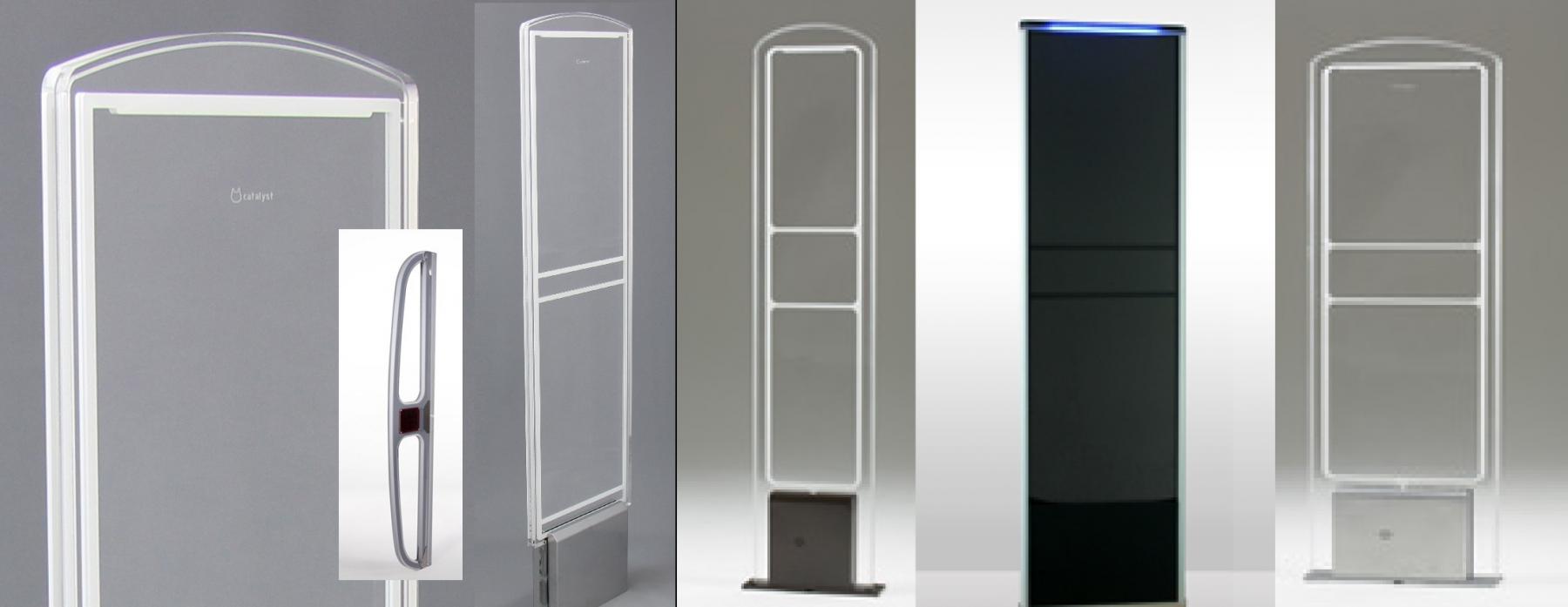
2. RF (Radio-Frequency systems):
Among the manufacturers of RF gates, there are two main companies, these are NEDAP and CheckPoint, producing only RF systems, noticeable logos and design that will always help you.
And since these 2 companies have long been on the market, their gates you will often find any other:
CheckPoint:
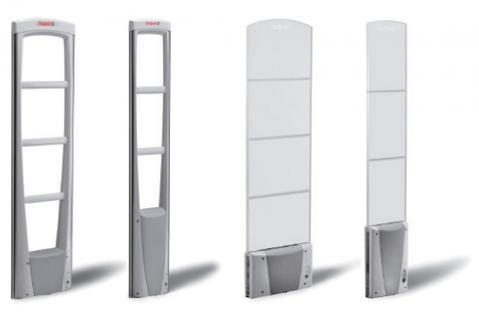 |
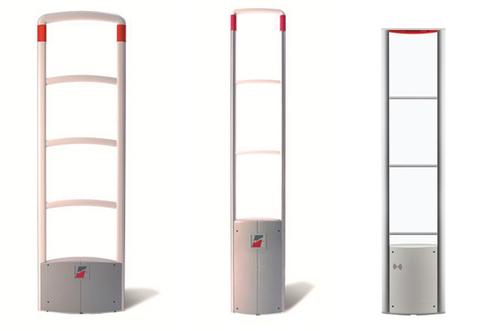 |
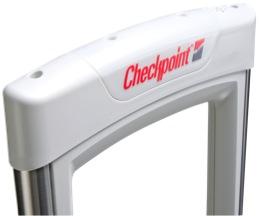 |
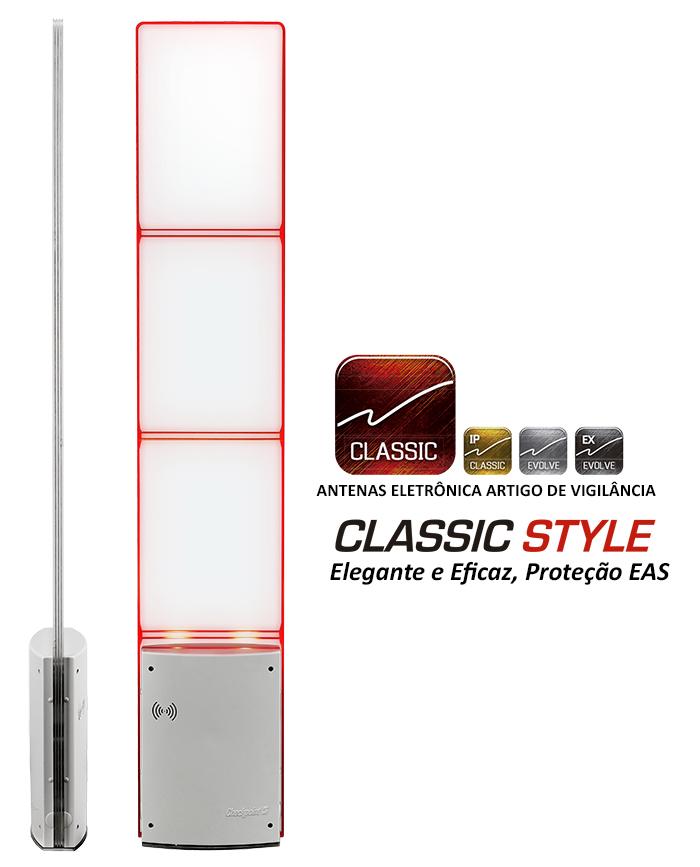 |
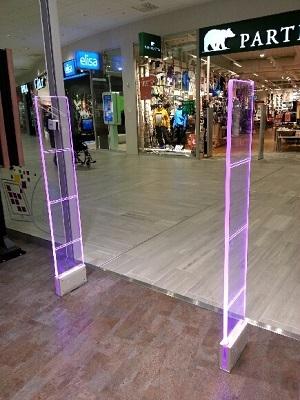 |
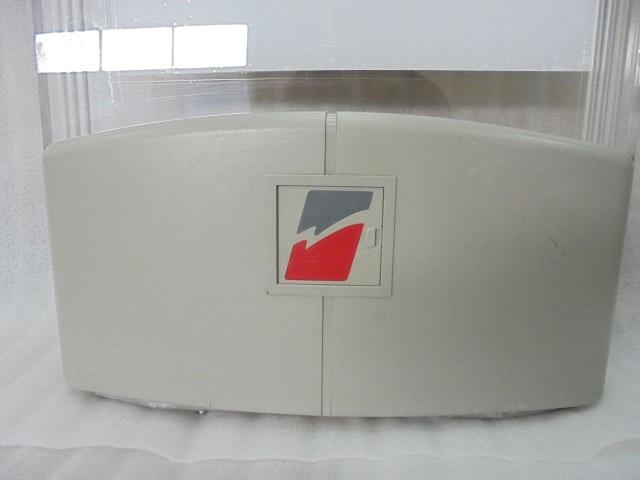 |
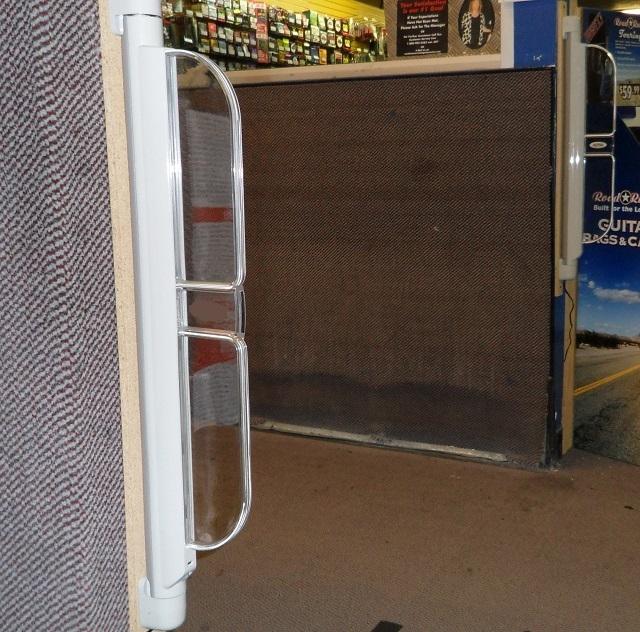 |
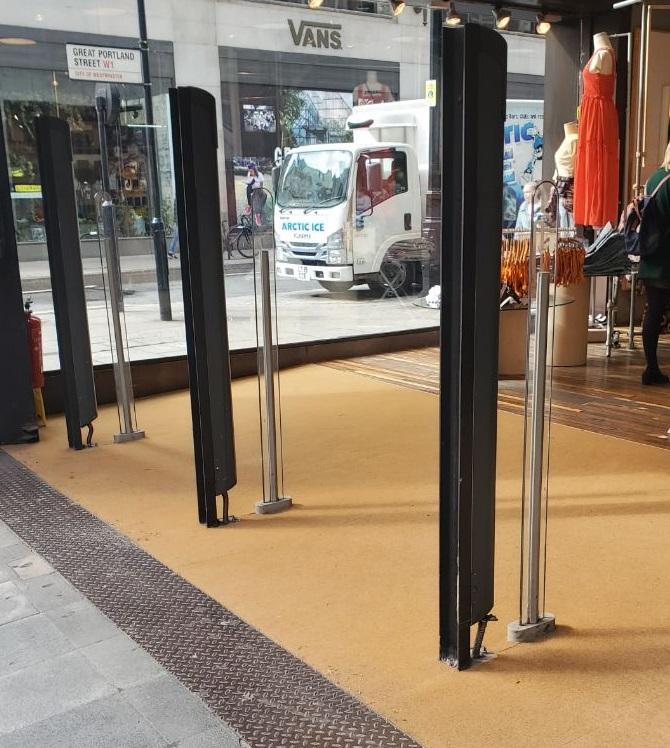 |
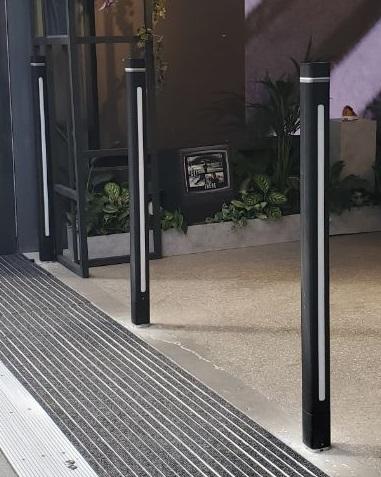 |
NEDAP:
.jpg) |
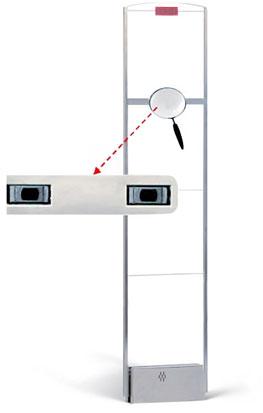 |
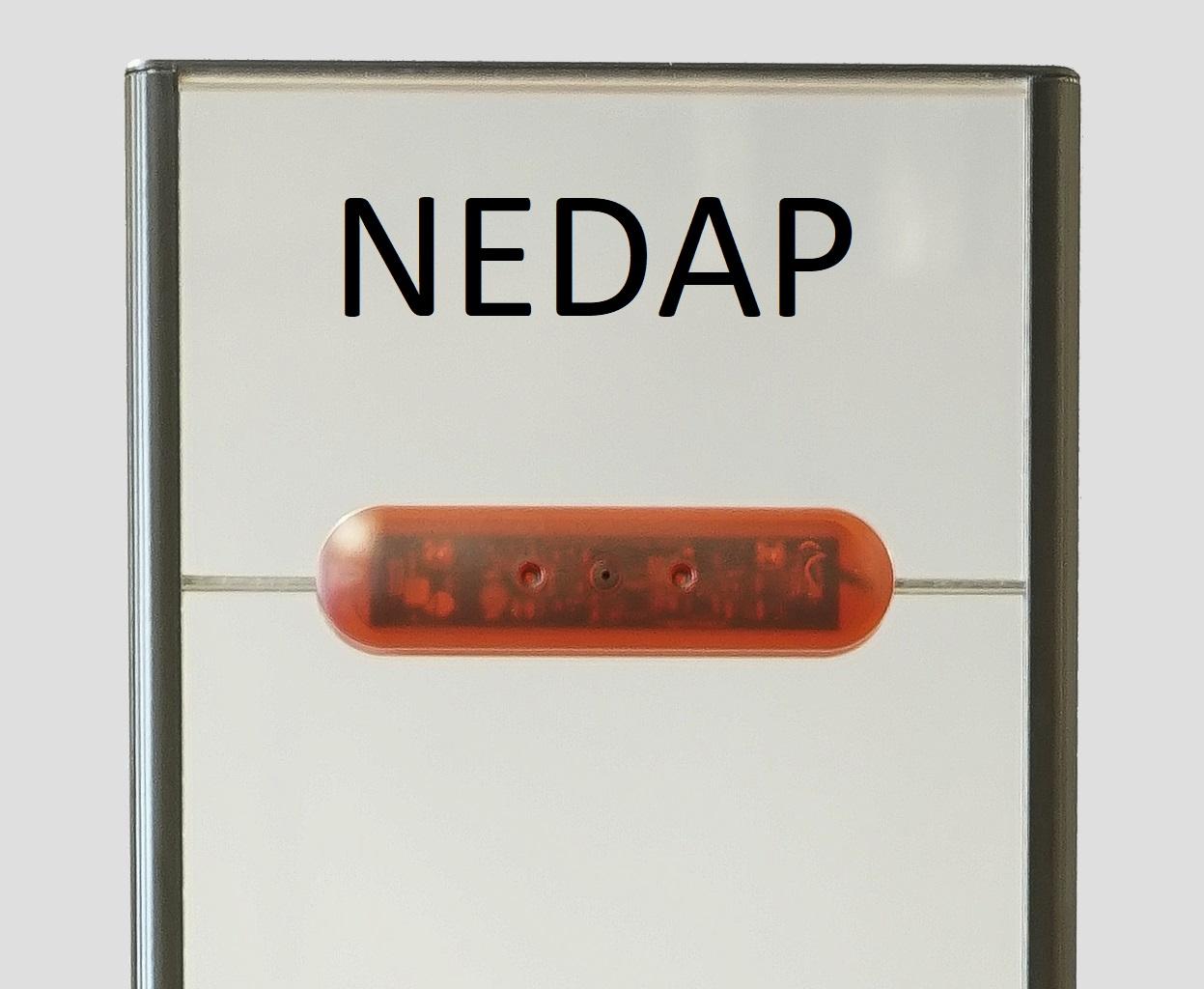 |
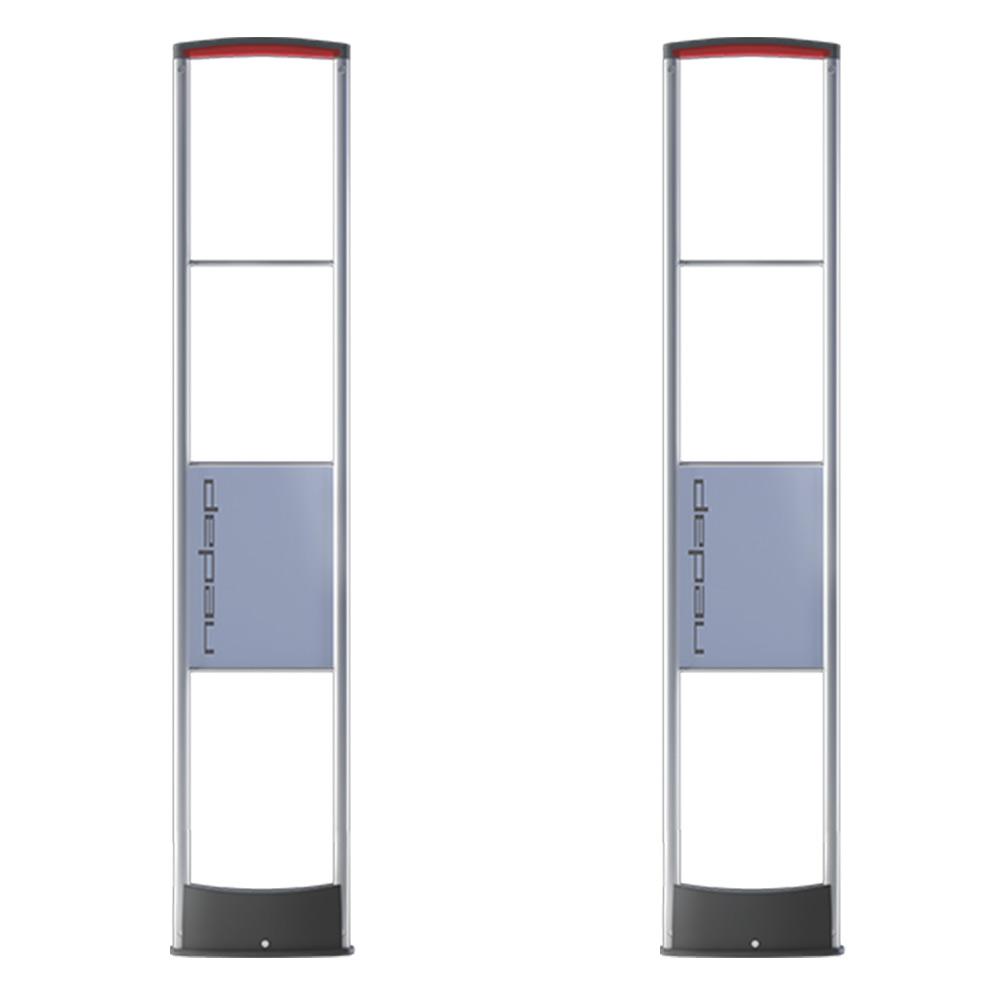 |
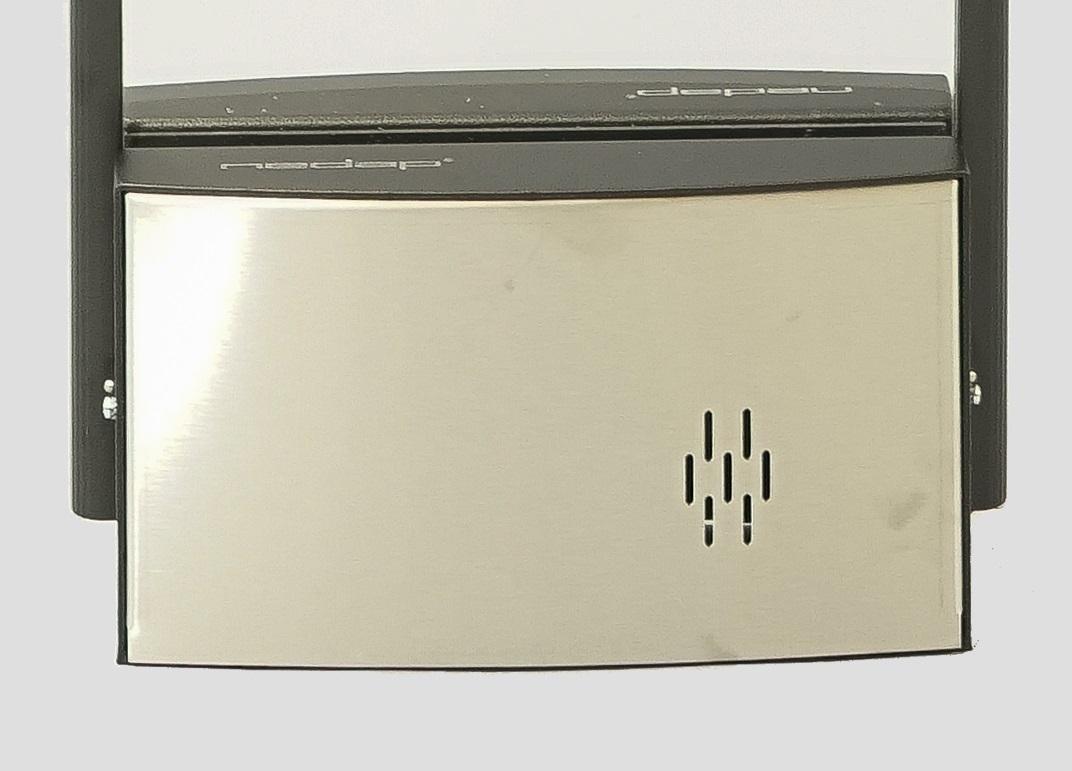 |
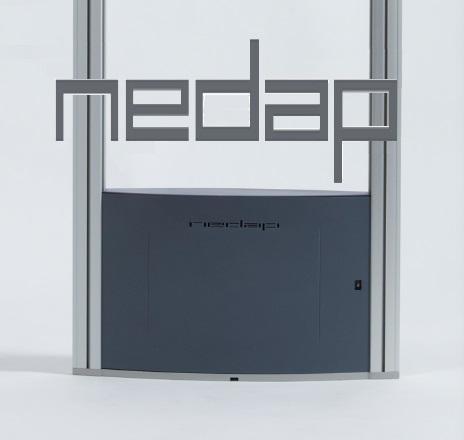 |
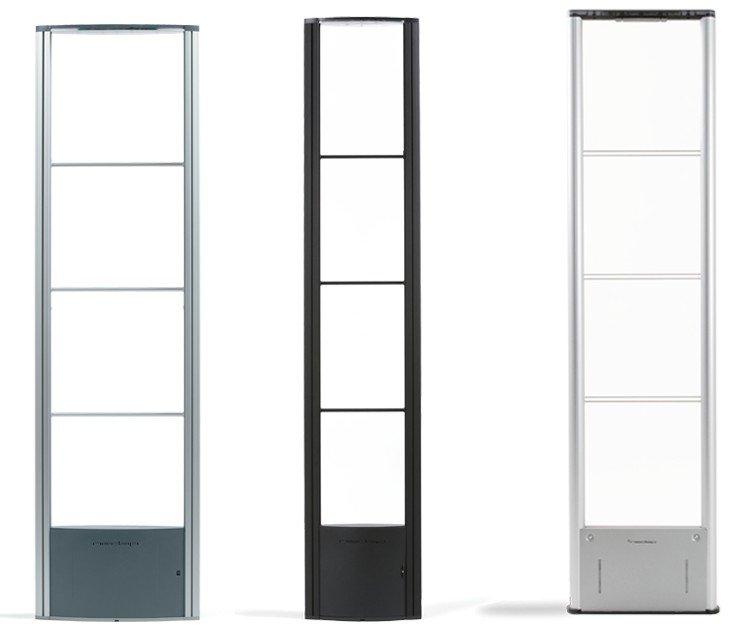 |
 |
 |
Crosspoint RF type:
 |
 |
 |
 |
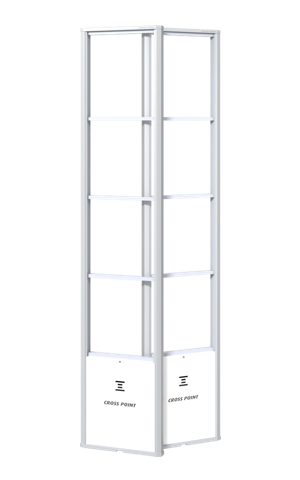 |
 |
 |
 |
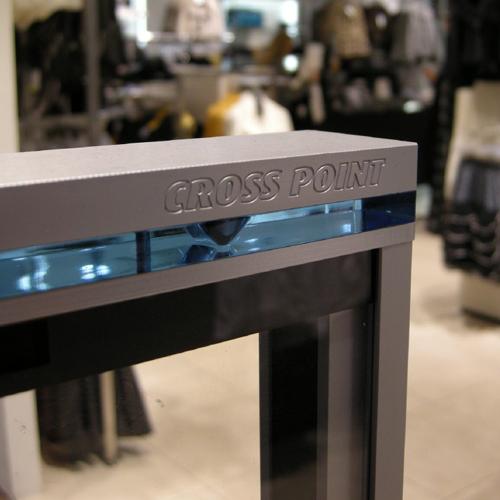 |
Gateway RF type:
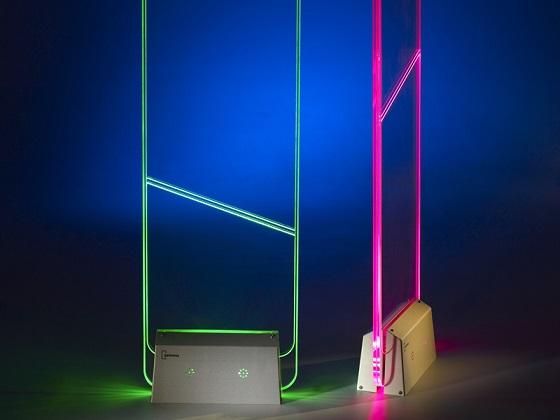 |
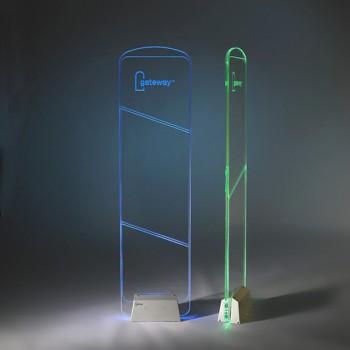 |
 |
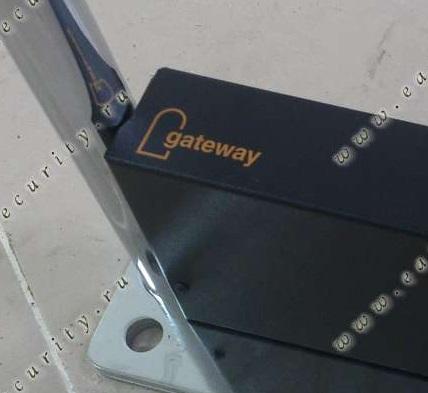 |
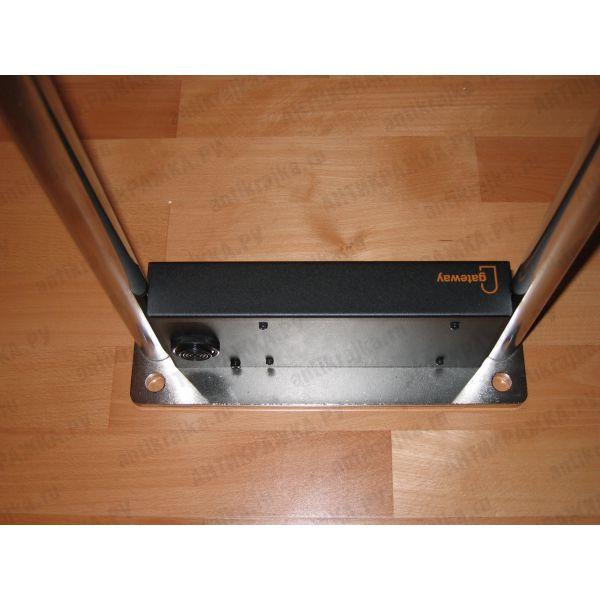 |
 |
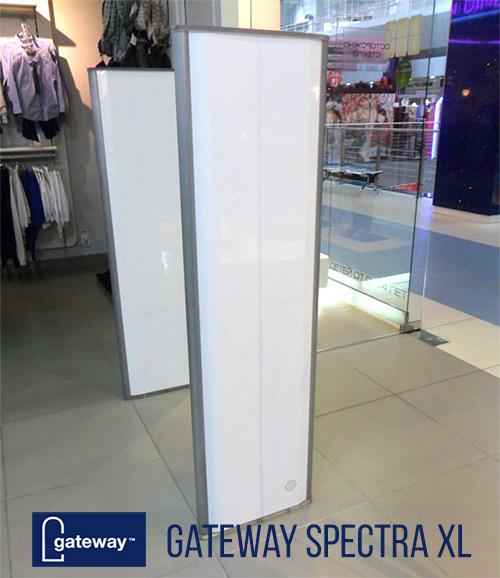 |
 |
 |
Only RF gates:
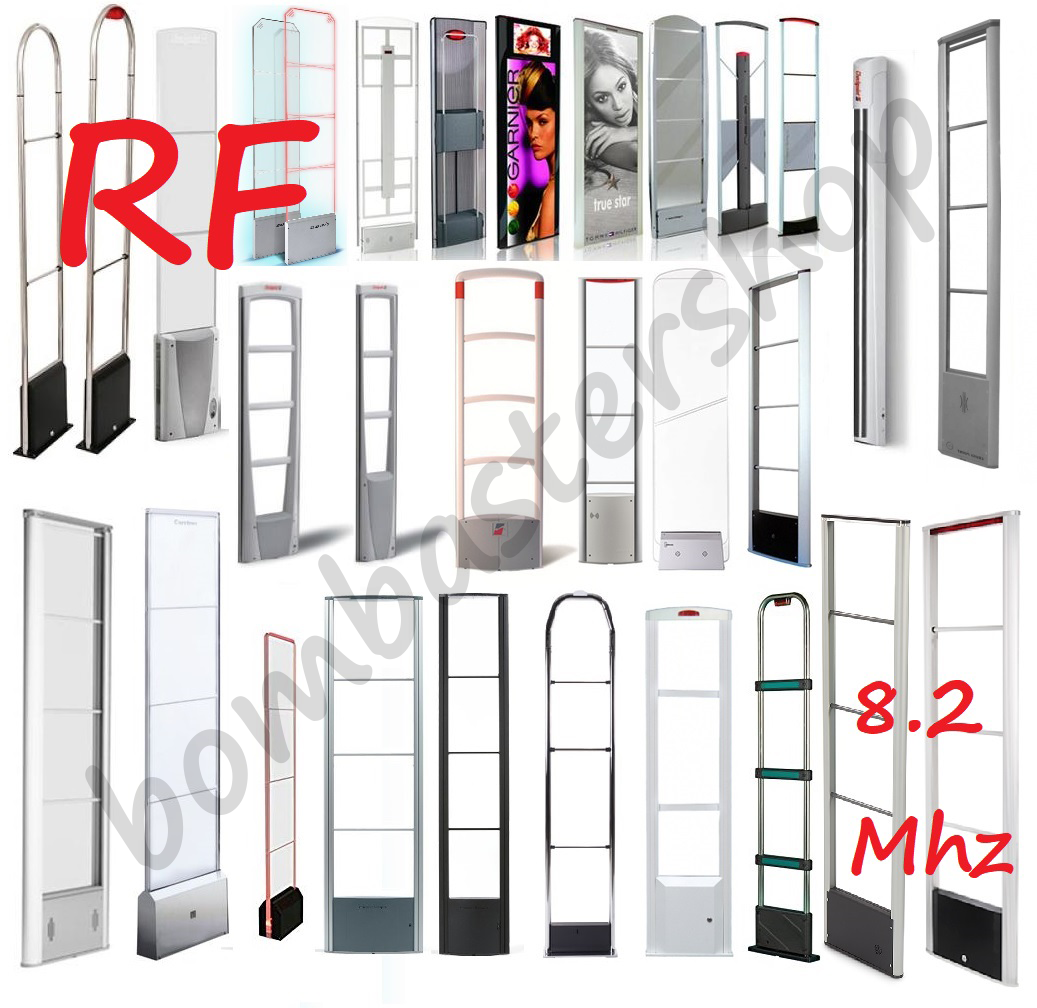
3. EM (Electro-Magnetic):
A unique feature of EM gates is that they are not narrow, they are always wide from 50 cm, they look much more massive even if they are hidden behind the advertisement. This is due to the complex technology of many coils of emitters in them or very two very large coils distributed throughout the plane.
Here you see that CheckPoint is a manufacturer of EM systems. Yes, it is, and Sensormatic also produces EM systems and has its own lineup. But this is in the past, now only bookstores or libraries acquire EM systems, but in the very near future they will move to another level of RFID technologies.
|
A GREAT hint about the Differences in the technical performance of the RF and AM gates, if you do not see the difference between the left and right parts of the picture, I advise you to carefully compare all AM gates and all RF gates. You will see that the location of the horizontal jumpers is significantly different, and if the RF systems basically have 2-3 jumpers evenly distributed in height, then the AMs always have only 2 or 1 but wider jumpers and they are closer to the middle of the antenna height.
|
4. Systems similar to the "Sentinel" type operating without anti-theft gates:
http://www.wgglobal.de/sentinel.html
Activation of the teg occurs when the tag-receives a signal from the emitters located above the store’s entrances. The antenna is usually located on the ceiling and is a square box without bulbs and any indication.
When the smart-tag is moved outside the store (or rather, when it enters a certain area of the antennas at the entrance), the emitters activate the system and the smart-tag starts to make a loud sound.
There are also Sentinel modifications based on the principle of signal disappearance from emitters that are inside the store! But the principle of activation (3alarm) when leaving the store is more common.
How common are these systems?
- It is extremely small, I hear only a few complaints a year about their existence. I communicate with several thousand people all over the world every year.
They are very expensive, smart-tags for them are ten times more expensive than usual, installation requires certain characteristics of the premises and technical equipment of the entrance groups.
What to do if you met with such a system?
- The best way is to bring the smart-tag out of service or by other methods to disrupt the ability of the smart-tag to receive or respond to a signal from the detection system.
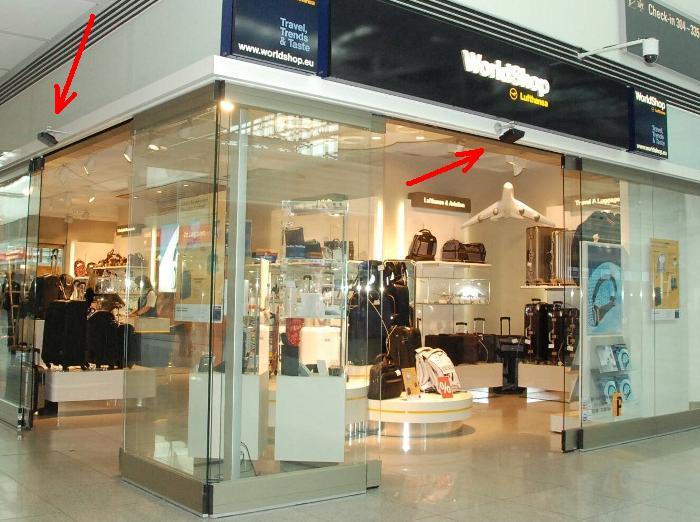
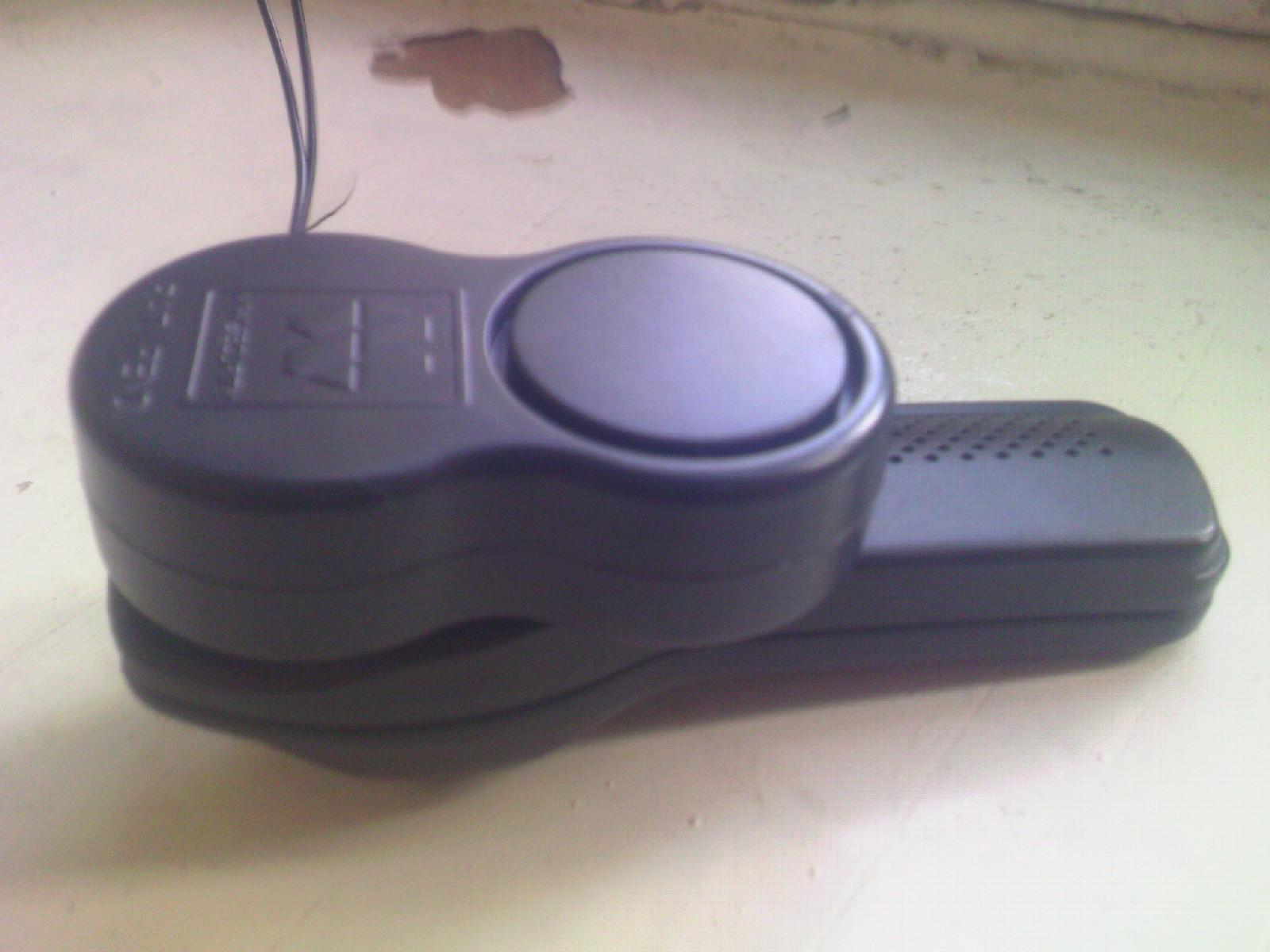
GATE SECTION CONCLUSIONS::
It is possible to distinguish the gates by their appearance. Then you have some doubts: look at the tags, labels, cash equipment.
For the overall development and visual presentation, I suggest you to look through the information given on the sites of firms selling anti-theft equipment. Laziness is not your friend in this case, spending a few hours can greatly simplify your actions in future, The biggest part of the systems and gated were presented here by me.
Part of the comments was moved from the old version of the site, because the old site is not compatible with the new one, so I transferred all the comments manually, thanks to everyone for the kind words.